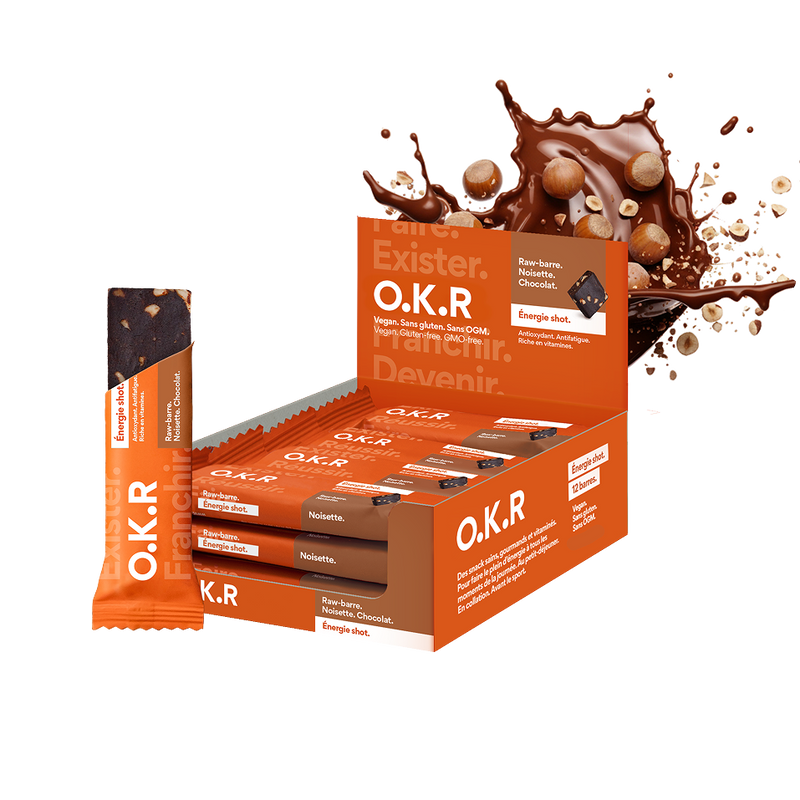What is vitamin D?
Vitamin D is a non-caloric organic substance, essential for our metabolism and good health. Soluble in fats (it is called “liposoluble”, like vitamins A , E and K ), it can be stored in fatty tissues.
Vitamin D acts as a hypercalcemic hormone, facilitating the absorption of calcium and phosphorus from the intestines.
Where to find vitamin D?
Vitamin D comes from two sources:
- Vitamin D2 or ergocalciferol: It is of plant origin and is found in most foods.
- Vitamin D3 or cholecalciferol: it is synthesized in the skin by the action of ultraviolet rays on cholesterol. Vitamin D3 is also present in foods of animal origin such as fish oils.
Both vitamin D2 and vitamin D3 are converted in the body into vitamin D.
So we meet our daily vitamin D needs in two ways:
Sun exposure
By exposing your skin to the sun for 15 to 20 minutes in the late morning or afternoon, you ensure that your body has a sufficient daily intake of vitamin D. But be careful not to overdo it, prolonged exposure is dangerous for your health.
Consumption of foods rich in vitamin D
Here is a non-exhaustive list of foods rich in vitamin D :
- oily fish, such as herring, sardines, salmon and mackerel;
- certain mushrooms, such as chanterelles, porcini mushrooms and morels;
- Dairy products fortified with vitamin D;
- Egg yolk;
- Dark chocolate (plain);
- Breakfast cereals fortified with vitamin D;
- Butter and margarine;
- Offal (especially liver);
- meat (to a lesser extent).
If you don't eat animal-based foods, you can add vitamin D supplements. Also, our vegan meal bars and drinks are enriched with vitamins and minerals, including vitamin D.
To ensure your body gets enough vitamin D and avoid deficiency, it is recommended to have a varied and balanced diet all year round and to eat two portions of fish per week, including one portion of oily fish.
You can seek advice from a nutrition professional who can suggest diets adapted to your body.
What is the role of vitamin D?
Vitamin D is essential for the proper functioning of our bodies. Its main function is to increase blood levels of calcium and phosphorus.
Maintaining a good level of calcium in the blood helps ensure:
- Optimal mineralization of bone, cartilage and tooth tissue;
- Effective muscle contraction;
- Good nerve transmission;
- Adequate coagulation.
Vitamin D is also involved in:
- Hormonal regulation;
- the differentiation and activity of cells of the immune system;
- The differentiation of certain skin cells.
Vitamin D also helps maintain a healthy immune system, which helps ward off viruses and bacteria that cause disease.
Many studies have been conducted to determine whether a vitamin D deficiency could increase the risk of developing cancer or, conversely, whether higher vitamin D levels could reduce the risk of developing cancer. However, no study has yet proven the link between vitamin D intake and the development of cancer.
How much vitamin D do you need?
The amount of vitamin D you need to avoid deficiency depends on many factors including:
- Age
- Ethnicity
- Latitude
- The season
- Sun exposure
The National Institutes of Health (NIH) recommends an average daily intake of 400 to 800 IU, or 10 to 20 micrograms. A daily vitamin D intake of 1,000 to 4,000 IU, or 25 to 100 micrograms, should be sufficient to ensure optimal blood levels for most people.
People who are overweight or obese, pregnant women, or postmenopausal women may need higher amounts of vitamin D. The maximum daily intake for vitamin D is 4,000 IU. Be sure not to take more than this without consulting a healthcare professional.
What are the symptoms of vitamin D deficiency?
A severe vitamin D deficiency in children can cause rickets. Symptoms of rickets include:
- Improper growth due to curved bones.
- Muscle weakness.
- Bone pain.
- Joint deformities.
Children with mild vitamin deficiencies may simply have weak, sore, and/or painful muscles.
Vitamin D deficiency is not as obvious in adults. Signs and symptoms may include:
- Fatigue.
- Bone pain.
- Muscle weakness, muscle pain, or muscle cramps.
- Mood changes, such as depression.
However, you may not show any signs or symptoms of vitamin D deficiency.
What are the risks of vitamin D deficiency?
The consequences of vitamin D deficiency on your health are:
- Muscle disorders such as muscle insufficiency, tetany, convulsions;
- Bone disorders such as osteomalacia or osteoporosis in adults, rickets in young people and growing children, which can lead to bone and muscle pain and bone deformities.
- A lack of vitamin D can also lead to reduced bone mass and therefore an increased risk of fractures. These risks are particularly high when physical activity levels are low.
What causes vitamin D deficiency?
Deficiency cases are caused by various reasons, here are some of them:
- Not consuming the recommended levels of vitamin D. This is likely the case if you follow a strict vegan diet , as most natural sources are animal-based. Our meal bars are enriched with vitamins and minerals.
- Limited sun exposure. Since the body makes vitamin D when your skin is exposed to the sun, you may be at risk of deficiency if you don't get any sun exposure. During the winter, vitamin D deficiency may be more common because there is less sunlight.
- Having dark skin. The pigment melanin reduces the skin's ability to produce vitamin D in response to sun exposure. Some studies show that older adults with darker skin are at high risk of vitamin D deficiency.
- The kidneys cannot convert vitamin D into its active form. With age, the kidneys become less efficient at converting vitamin D into its active form, increasing their risk of vitamin D deficiency.
- The digestive tract cannot adequately absorb vitamin D. Certain medical conditions, including Crohn's disease, cystic fibrosis , and celiac disease, can affect your gut's ability to absorb vitamin D from the foods you eat.
- Obesity. Vitamin D is extracted from the blood by fat cells, altering its release into the circulation. People with a body mass index of 30 or higher often have low blood levels of vitamin D.
- Being pregnant. Pregnant women need a higher intake of vitamin D. Therefore, it is essential to increase your vitamin D intake during pregnancy.
In summary
Vitamin D is essential for your health. Light sun exposure and a diet rich in vitamin D can help prevent vitamin D deficiency. A lack of vitamin D can be dangerous for your health; vitamin D insufficiency manifests itself through several symptoms and can lead to diseases such as osteoporosis. If you think you may be deficient in vitamin D, please consult a healthcare professional who can prescribe treatment and medications tailored to your needs, or seek advice from a nutrition professional who can recommend a suitable diet to avoid vitamin D deficiency.













